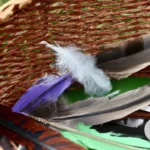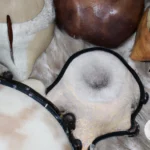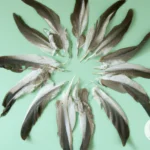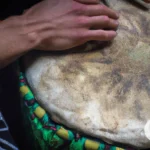For many indigenous cultures around the world, shamanism is an integral aspect of spirituality and healing. One of the key components of shamanic practices are power objects, which are believed to hold specific spiritual or energetic properties that can aid in various ways. From crystals and feathers to drums and masks, there are numerous different types of power objects used in shamanic traditions. Understanding the importance and significance of these objects is essential for understanding the deeper cultural and spiritual practices of shamanism. In this article, we will explore the different types of power objects used in shamanic traditions and how they are selected and used in various practices.
The Role of Power Objects in Shamanic Traditions
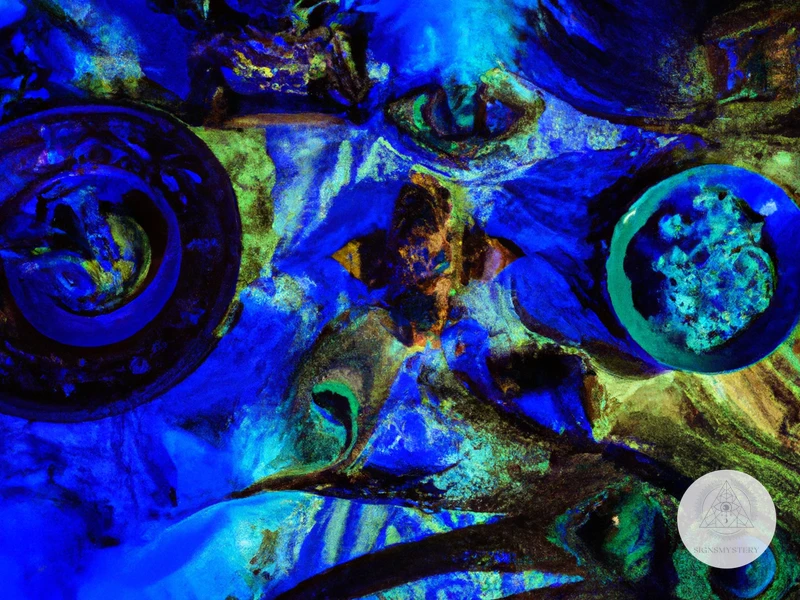
Power objects play a significant role in shamanic traditions worldwide. These objects hold special meaning and are imbued with spiritual power that can be utilized by the shaman during their practice. The use of power objects ranges from crystals and stones to feathers, animal bones, and rattles. Each object has a unique attribute that grants the shaman access to different forms of healing and communication with the spiritual realm. Power objects are believed to be the physical manifestation of spiritual energy, and their selection and use require utmost care and respect. Understanding their cultural and spiritual significance is essential in shamanic practice. To learn more about power objects in shamanic tradition, check out /power-objects-shamanism/.
What are Power Objects?
Power objects are sacred tools used in shamanic traditions to enhance spiritual connection, provide protection, and increase personal power. These objects are imbued with energy and intention, and are often believed to hold spiritual power and wisdom. They can be made from a variety of materials including crystals, feathers, animal bones and teeth, plants and herbs, and more. Each object is chosen and used in a specific way to achieve a desired effect or outcome in a shamanic ceremony or practice.
In shamanic practice, power objects are considered to be living entities with their own spirit and energy. They are often treated with reverence and respect, and are sometimes even spoken to or honored as if they were alive. Power objects are used to align the shaman or practitioner with the natural world, and to help them tap into the energies of the universe.
Here are some common types of power objects used in shamanic traditions:
- Crystals and stones
- Feathers
- Animal bones and teeth
- Plants and herbs
- Rattles
- Drums
- Masks
- Talismans and amulets
- Offering bowls and altars
- Ceremonial robes and clothing
It should be noted that these are not the only types of power objects that exist. Many shamanic traditions have their own unique power objects and tools that are specific to their culture and practices.
The use of power objects in shamanic practice is an integral part of the spiritual tradition and can be a powerful aid in healing, divination, and spiritual growth. It is important to approach these objects with respect and understanding, as they are considered to be sacred and often carry significant meaning and energy.
The Significance of Power Objects in Shamanism
The significance of power objects in shamanism cannot be overstated. In shamanic traditions, power objects are considered to be a manifestation of the spiritual world, providing a link between the physical and supernatural realms. These objects are believed to hold spiritual power that can be harnessed to promote healing, growth, and transformation.
Power objects serve as a physical representation of the sacred and serve to anchor one’s spiritual practice. In this sense, they are seen as potent tools for connection with the divine. Additionally, power objects are often imbued with the shaman’s personal energy and intention, making them even more powerful and effective in ritual settings.
It is worth noting that the significance of power objects isn’t limited to their practical uses in shamanic practices. These objects also hold cultural and spiritual significance. In indigenous communities, power objects are often intimately tied to the land, ancestors, and the natural world. They are seen as sacred artifacts that represent and embody the collective heritage of a group of people.
The significance of power objects in shamanism runs deep. They are potent tools for healing, transformation, and spiritual growth, as well as powerful symbols of the sacred that hold cultural and spiritual significance. To learn more about the use of power objects in shamanic healing, check out our article on /power-objects-shamanic-healing/. For a deeper dive into the ethics of using power objects, read our article on /the-ethics-of-shamanic-power-objects/.
Major Types of Power Objects
The major types of power objects used in shamanic traditions include crystals and stones, feathers, animal bones and teeth, plants and herbs, rattles, drums, masks, talismans and amulets, offering bowls and altars, and ceremonial robes and clothing. Each of these objects has its own unique properties and is chosen according to the specific needs of the shamanic practice. Crystals and stones, for example, are selected for their healing properties and energy. Feathers are believed to aid in communication with the spirit world. Animal bones and teeth are often used for protection, while plants and herbs are chosen for their cleansing and purifying properties. Rattles and drums are used for creating rhythmic vibrations that aid in inducing shamanic trance states, and masks are used for invoking and embodying various spirits. Talismans and amulets are worn for protection and connection to specific spirits, and offerings are made to the spirits on altars or in offering bowls. Ceremonial robes and clothing are worn to symbolize the shaman’s connection to the spirit world and to aid in the trance state.
1. Crystals and Stones
When it comes to power objects used in shamanic traditions, crystals and stones are often a popular choice due to their natural energy and ability to hold power. Shamans believe that each crystal or stone has its unique vibration and energy, making them useful tools for healing, communication with spirits, and transformation. Different colored stones are believed to have their properties and characteristics, making them ideal for various purposes.
Here are some examples of crystals and stones used in shamanic practices and their properties:
| Crystal/Stone | Properties and Characteristics |
|---|---|
| Clear Quartz | This stone is known for its ability to amplify energy and intention, making it a great tool for setting intentions, manifestation, and healing. It can also be used to enhance communication with the spirit world. |
| Amethyst | This purple stone is believed to have calming and healing properties, making it useful for meditation and spiritual growth. It can also help with addiction and emotional issues. |
| Malachite | This green stone is believed to have protective and transformative properties, making it useful for healing emotional trauma and negative patterns. It can also aid in spiritual transformation and manifestation. |
| Turquoise | This blue-green stone is believed to have protective and healing properties, making it useful for healing physical and emotional imbalances. It can also aid in communication and clarity. |
Shamans often choose crystals and stones based on the specific needs of their clients or their own spiritual practices. They may use them in various ways, such as placing them on the body during a healing session, carrying them in a medicine bag, or incorporating them into a ritual or ceremony.
It’s important to note that while crystals and stones are powerful tools, they should also be treated with respect and gratitude. Shamans believe that all things have a spirit and should be honored accordingly. Before using a crystal or stone, it’s essential to ask for permission and offer gratitude for its use. It’s also important to cleanse the stone regularly to remove any negative energy it may have absorbed.
Overall, crystals and stones are just one example of the many power objects used in shamanic traditions. Each object has its unique properties and uses, and shamans carefully choose the objects they work with based on their individual needs and intentions.
2. Feathers
Feathers are another common power object used in shamanic traditions. They are considered powerful symbols of spiritual growth and ascension, as well as representing the element of air and the realm of the sky.
There are many types of feathers that can be used as power objects, including those from birds such as eagles, owls, hawks, and turkeys. Each type of feather has its own unique properties and associations, and shamans may choose specific feathers based on their intended purpose.
For example, eagle feathers are often seen as particularly potent and are highly revered in many cultures. They are associated with spiritual insight, courage, and connection to the divine. Owls, on the other hand, are associated with wisdom and the ability to see in the dark, while turkey feathers are often associated with abundance and gratitude.
Feathers may be used in a variety of ways during shamanic practices. They may be worn as part of ceremonial attire, used in smudging or cleansing rituals, or incorporated into protective talismans. They may also be used as tools for divination, such as in the practice of augury where the appearance and behavior of birds is interpreted as messages from the spirits.
It is important to note that in some cultures, certain feathers may be seen as sacred and may only be used by specific individuals or for specific purposes. Additionally, it is important to show respect and gratitude for any feathers that are being used as power objects. This can be done through offerings or prayers of gratitude.
3. Animal Bones and Teeth
Animal bones and teeth are common power objects used in shamanic traditions. They are often considered to possess spiritual energy and can represent the essence of the animal they came from. The bones and teeth of different animals are believed to carry different energies and symbolism. Here are some examples:
| Animal | Bones/Teeth | Meaning/Symbolism |
|---|---|---|
| Deer | Antlers | strength, grace, agility |
| Bear | Claws, teeth, bones | power, protection, courage |
| Wolf | Teeth, bones | loyalty, companionship, strength |
| Coyote | Bones | wisdom, humor, trickery |
| Eagle | Bones, talons | strength, vision, freedom |
Shamans may use animal bones and teeth for various purposes. They may be incorporated into healing ceremonies as a way to draw on the energy of the animal and use it to help the patient. For example, a shaman working with a patient who needs more strength might use deer antlers for their energy of grace and agility.
Animal bones and teeth may also be used for divination or spirit communication. A shaman might burn bones or teeth to create smoke signals that are interpreted as messages from the spirit world. They may also use the bones or teeth themselves as tools for divination, interpreting their patterns or shapes as messages from the spirits.
It’s important to note that in many cultures, there are specific rules and protocols around the use of animal bones and teeth. For example, some cultures may only use bones from animals that were killed for food, while others may require special rituals or offerings to be made before using the bones in ceremony. It’s important to show respect and gratitude for the animals whose bones and teeth are being used, and to use them with intention and care.
4. Plants and Herbs
In shamanic traditions, plants and herbs are often used as power objects. They are believed to possess healing properties and spiritual qualities that can aid in shamanic practices.
Some of the most commonly used plants and herbs in shamanic traditions include:
- Ayahuasca: a powerful hallucinogenic brew used for spiritual and healing purposes by indigenous tribes in South America.
- Tobacco: considered a sacred plant by many indigenous shamanic traditions, tobacco is used for healing and to facilitate communication with spirits.
- Cacao: often used in shamanic rituals for its heart-opening qualities and ability to connect individuals with their emotions.
- Sage: a commonly used herb for smudging and purification in countless shamanic traditions around the world.
- Cannabis: sometimes used in shamanic practices for its psychoactive and spiritual effects.
- Peyote: a cactus that is used in some native traditions for its hallucinogenic properties and spiritual significance.
When using plants and herbs as power objects, it’s important to consider their proper usage and preparation. Many plants and herbs have specific methods of preparation that are considered essential for their effectiveness in shamanic practices. For example, ayahuasca is traditionally prepared by boiling the ayahuasca vine and the leaves of the chacruna plant together, while tobacco is often smoked or used as a tincture.
It’s also important to show gratitude and respect for plants and herbs used in shamanic practices, as many indigenous cultures view these plants as sacred and powerful allies. This can be done by offering prayers or blessings to the plant or herb before using it, or by implementing sustainable harvesting practices to ensure the continued health and abundance of the plant population.
Plants and herbs are valuable power objects in shamanic traditions due to their spiritual and healing properties. The careful selection, preparation, and respectful use of these plants is a vital aspect of shamanic practices and requires attention to detail and reverence for the natural world.
5. Rattles
Rattles are commonly used as power objects in shamanic traditions. They are usually made from natural materials such as gourds, animal horns, or turtle shells. The sound of the rattles is believed to be a powerful tool for shifting consciousness and altering one’s state of being.
There are different types of rattles that are used for specific purposes in shamanic practices. Here are some examples of rattles and their uses:
| Type of Rattle | Uses |
|---|---|
| Seed Rattles | They are used for healing ceremonies as they are believed to represent the seed of life and the potential for growth and change. |
| Bone Rattles | They are made from animal bones and are used for spirit communication and divination. Bone rattles are believed to connect the shaman with the spiritual realm and ancestors. |
| Double-headed Rattles | They are used in most shamanic practices for calling upon spirits, for healing ceremonies, and for purification. Double-headed rattles are believed to represent balance and harmony. |
When choosing a rattle as a power object, the shaman considers the materials used, the sound it produces, and its symbolic significance. The sound of the rattle is especially important as it is believed to carry the intention of the shaman and amplify it in the spiritual realm.
During healing ceremonies, the shaman may also use the rattle as a tool for clearing and balancing the energetic field of their client. They may move the rattle around the client’s body and over their energy centers to help release any blockages and promote healing.
Rattles are an important tool in shamanic practices. They are believed to hold powerful energies and can be used for a variety of purposes such as healing, spirit communication, and purification. The shaman carefully selects the type of rattle to use based on the intended purpose and the symbolic meaning of the materials used. The sound of the rattle is a powerful tool for shifting consciousness and is often used during healing ceremonies to balance and clear the energetic field of the client.
6. Drums
Drums in Shamanic Practices
Drums have been used in shamanic practices for centuries. It is believed that the sound of the drum can help to induce a trance-like state, which allows the shaman to communicate with the spirit world. The use of drums varies among different shamanic traditions, but they are generally viewed as an essential tool for achieving altered states of consciousness.
Traditional Shamanic Drums
Traditional shamanic drums are usually made from a wooden frame and animal hide. The hide is stretched over the frame and laced together with hides or cords. The size and shape of the drum vary depending on the cultural tradition. In some cultures, the drum is round, while in others, it may be elongated. The drum is often decorated with symbolic images, such as animals or spirals, which reflect the beliefs and values of the shamanic tradition.
Types of Shamanic Drums
There are several types of shamanic drums used in different shamanic traditions. Some of the most common types include:
| Type | Description |
|---|---|
| Frame Drum | A drum with a flat frame and a single drumhead. The drumhead is stretched over the frame and played with a beater or by hand. |
| Double-Headed Drum | A drum with two drumheads, one on each end of the frame. The drum is played with two beaters or by hand. |
| Ceremonial Drum | A large, ornate drum used in ceremonial contexts. The drum often includes symbolic images and may be played by multiple drummers. |
| Water Drum | A drum filled with water or another liquid that creates a unique sound when played. The water drum is commonly used in Native American traditions. |
How Drums Are Used in Shamanic Practices
Drums are used in a variety of ways in shamanic practices. One common use is in journeying, where the shaman uses the drumbeat to enter a trance state and communicate with the spirit world. Drums are also used in healing ceremonies, where the drumbeat is believed to help expel negative energy from the body. Drums may be used in divination practices to help the shaman interpret messages from the spirits.
Caring for Shamanic Drums
Shamanic drums are considered sacred objects and should be treated with respect and care. It is important to store the drum in a clean, dry place and to avoid exposing it to extreme temperatures or humidity. The drum should also be played regularly to keep the hide from drying out and losing its resonance. When not in use, the drum should be covered with a protective cloth or placed in a protective bag.
7. Masks
Masks are another type of power object commonly used in shamanic practices. They are often used in rituals and ceremonies for protection, transformation, and spiritual connection. Masks can be made from a variety of materials, including wood, leather, feathers, and fur. The design of the mask often incorporates symbols and colors that hold spiritual significance.
One type of mask commonly used in Shamanism is the transformation mask. These masks consist of two distinct layers that can be opened and closed to reveal a different image underneath. The transformation mask is used to represent the concept of change and transformation, as well as to facilitate communication with spirit beings.
Another type of mask commonly used in Shamanism is the ceremonial mask. These masks are used in ceremonies to honor specific spirits or ancestors. The mask is believed to help the shaman embody the spirit or ancestor being honored and facilitate communication with them. Ceremonial masks are often intricately designed with specific colors and symbols that hold spiritual significance.
In addition to their use in ceremonies, masks can also be used in healing practices. During a healing ceremony, the shaman may wear a mask to help them connect with the spirit world and channel healing energy. Masks may also be used to protect the shaman from negative energy or beings during a healing ceremony.
It is important to note that masks, like all power objects, hold significant spiritual and cultural value and should be treated with respect and reverence. They should only be made and used by those who have been trained in their proper use and significance in Shamanism.
8. Talismans and Amulets
Talismans and amulets play a significant role in shamanic traditions. These objects are believed to possess spiritual powers that can protect the wearer from negative energies, evil spirits, and illnesses. Talismans and amulets come in various shapes, sizes, and materials, each with their unique symbolism and meaning.
In shamanism, talismans and amulets are often made of natural materials such as stones, crystals, animal bones, and plant roots. The selection of materials depends on the intention and purpose of the talisman or amulet. For instance, tiger’s eye stone is believed to enhance courage and confidence, while obsidian is said to provide protection and grounding.
Some talismans and amulets are worn as necklaces, bracelets, or anklets, while others are attached to clothing or placed in pockets or purses. The placement of the talisman or amulet also determines the type of energy it attracts or repels. For example, a talisman worn close to the heart is believed to provide emotional stability and spiritual guidance, while a protective amulet worn at the entrance of a house or workplace wards off negative energies and bad luck.
In shamanic practices, talismans and amulets are often infused with spiritual energy through rituals and ceremonies. The energy is charged through intention, prayer, and visualization techniques, imbuing the object with the power to fulfill its intended purpose. The shaman or practitioner may also use incantations and invocations to call upon the spirit of the talisman or amulet to guide and protect them during their shamanic journey.
Talismans and amulets are powerful tools used in shamanic traditions to provide protection, guidance, and healing energies. They are chosen and crafted with great care, and their significance and symbolism woven into the fabric of shamanic culture. These objects are not just simple trinkets, but sacred items that hold the power of the spirit world.
9. Offering Bowls and Altars
Offering bowls and altars are important power objects used in shamanic traditions. These objects are imbued with spiritual significance and are used to honor and show respect to the spiritual entities and energies that are being worked with in a particular shamanic practice.
Offering bowls are small bowls made of different materials like clay, wood, stone, or metal. These bowls are filled with various offerings such as food, herbs, flowers, water, crystals, and other symbolic objects. The offerings are placed in the bowl as a way of showing gratitude and respect to the spirits being honored, as well as to invite their presence and blessings into the ceremony. For example, in Andean shamanism, an offering bowl called a Despacho is created as a way of honoring the spirits of nature and offering gratitude for their blessings.
Altars are another form of power objects that are used to create a sacred space for shamanic practices. An altar is typically a flat surface like a table or a raised platform that is decorated with symbolic objects such as crystals, feathers, candles, statues, and offerings. The objects on the altar are chosen carefully, and each object holds its own spiritual significance. For example, a statue of a particular deity or spirit may be placed on the altar as a way of calling in their energy and presence to the ceremony.
Altars are also created to honor specific events like solstices, equinoxes, and other seasonal changes. In these cases, the altar may be decorated with objects that represent the energies of that particular season or event. For example, during the winter solstice, an altar may be created with objects that represent rebirth, transformation, and new beginnings.
When setting up an offering bowl or altar, it is important to do so with intention and respect. The objects should be arranged in a way that feels harmonious and balanced, and each offering should be made with gratitude and intention. The objects on the altar should be treated with care and reverence, and should only be touched or moved during the ceremony if it is absolutely necessary.
Offering bowls and altars are powerful power objects that play a significant role in shamanic traditions. They are used to create sacred space, honor spiritual entities and energies, and offer gratitude and blessings. When used with intention and respect, these objects can enhance the effectiveness of shamanic practices and deepen the connection between the practitioner and the spiritual realm.
10. Ceremonial Robes and Clothing
Ceremonial robes and clothing are a crucial type of power object used in shamanic traditions. These robes and clothing are often specially made for the shaman and are adorned with symbols and images that represent spiritual power and significance.
The fabrics used to make ceremonial robes are usually natural and may include wool, silk, or cotton. The colors of the robes are also of great significance and may vary depending on the specific cultural and spiritual traditions being observed. For instance, black is often associated with death and
Subscribe to Our Newsletter
Sign up to receive the latest news and updates.
In some shamanic traditions, the ceremonial robe may also be used to represent the shaman’s connection to the natural world. For example, a shaman who works with the spirits of animals may adorn their robe with images of animals, while a shaman who primarily works with plants may have a robe covered in floral designs.
Ceremonial clothing can also play a role in the shaman’s protection during intense spiritual practices. These clothing items may be decorated with talismans or amulets that are believed to protect the shaman from negative energies or entities.
The robes or clothing worn by the shaman during a ceremony may also change based on the specific stage of the ritual. For example, some shamans may start a ceremony wearing one set of clothing, then change to another set of robes or clothing during a different stage of the ceremony.
Ceremonial robes and clothing are a significant type of power object used in shamanic traditions, and they play an essential role in many shamanic rituals and practices. These garments are carefully chosen, handmade, and often imbued with spiritual meaning and significance, making them an essential tool in the shaman’s spiritual work.
How Power Objects Are Selected and Used in Shamanic Practices
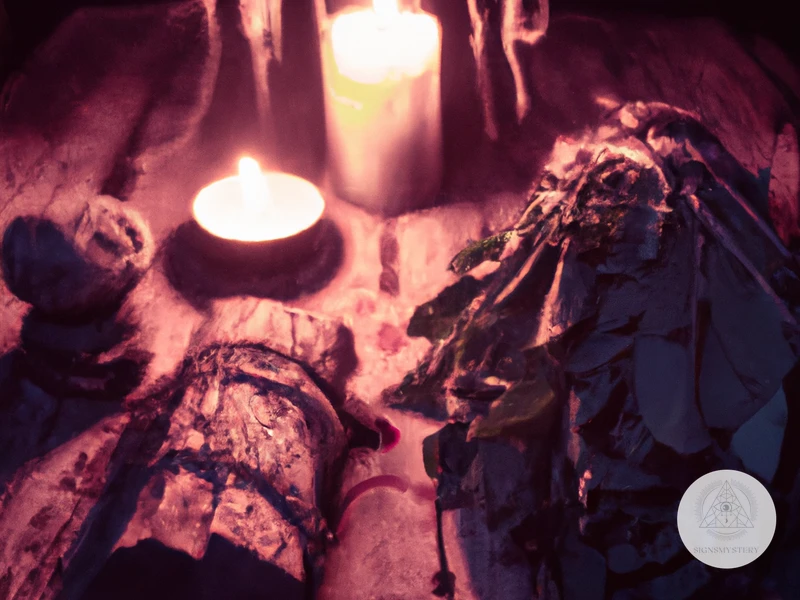
Shamans choose their power objects based on several factors, such as personal connection, inherent energetic properties, and their specific purpose in a ritual or ceremony. Crystals and stones, for instance, are commonly used for their grounding and amplifying qualities, while feathers are often seen as symbolizing spiritual communication and protection. Animal bones and teeth are believed to hold the power and essence of the specific animal, making them useful for invoking that animal’s spirit. Plants and herbs, meanwhile, may be chosen for their medicinal and aromatic properties, as well as their association with specific deities or spirits. Rattles and drums are used for their ability to create a rhythmic, trance-inducing sound, which can aid in communicating with spirits or entering altered states of consciousness. Talismans and amulets are chosen for their protective qualities, while masks are used to represent various archetypes or spirits. Ultimately, the selection of power objects is a deeply personal process, and each shaman will have their own unique set of objects that they use in their practice.
Factors Considered When Choosing Power Objects
When selecting power objects for shamanic practices, there are several factors to consider. One of the most important factors is the specific intention or purpose of the shamanic ceremony or ritual. The power object chosen should align with this intention and support the desired outcome. For example, if the intention is for healing, then crystals or stones with healing properties, such as amethyst or rose quartz, may be selected.
The cultural and spiritual significance of the power object is also important to consider. Some power objects may hold a particular significance in certain cultures or spiritual traditions. It’s important to be respectful of these cultural and spiritual beliefs when selecting and working with power objects.
The energetics of the power object should also be taken into account. Some power objects may have a strong and distinct energy, while others may be more subtle. The shaman may choose a power object based on the energy they feel it possesses and how it resonates with their own energy.
The physical attributes of the power object may also play a role in the selection process. For example, feathers or animal bones may be chosen for their aesthetic qualities, while certain plants or herbs may be selected for their scent or visual appearance.
Ultimately, the shaman’s intuition and connection to spirit will guide them in the selection of power objects for their practice. Each shaman may have their own unique way of selecting power objects, and there is no one “right” way to do it. However, being mindful of these various factors can help to ensure that the power object chosen is aligned with the intentions of the shamanic practice and supports the desired outcomes.
The Use of Power Objects in Healing Ceremonies
The use of power objects in healing ceremonies is an integral part of shamanic traditions. These objects are believed to possess spiritual energy that can be harnessed to facilitate healing. Below are some examples of how power objects are used in healing ceremonies:
1. Crystals and Stones: Different types of crystals and stones are used in healing ceremonies to balance the energies of the body. For example, clear quartz is used to amplify healing energy, while rose quartz is believed to heal emotional wounds.
2. Feathers: In some shamanic traditions, feathers are used to remove negative energy from the body during a healing ceremony. The shaman may use a feather to brush the energy field around the body to remove any blockages.
3. Animal Bones and Teeth: Animal bones and teeth are also used in healing ceremonies to draw upon the energy of the animal spirit. For example, the bones of a bear may be used to harness its strength and power, while the teeth of a wolf may be used to draw upon its wisdom.
4. Plants and Herbs: Many shamanic traditions use plants and herbs in healing ceremonies. These plants are believed to possess medicinal properties that can be used to treat physical and emotional ailments.
5. Rattles: Rattles are often used in shamanic healing ceremonies to create a rhythmic sound that helps to induce a trance-like state. This state allows the shaman to enter into a state of heightened awareness where they can better access the spiritual energies necessary for healing.
6. Drums: In addition to rattles, drums are also used in healing ceremonies. The steady beat of the drum is believed to create a vibrational energy that can help to release emotional blockages and promote healing.
7. Masks: Some shamanic traditions use masks in healing ceremonies to represent different spirits or energies. The shaman may wear the mask to embody the energy of the spirit and facilitate healing.
8. Talismans and Amulets: Talismans and amulets are objects that are believed to possess protective or healing powers. They may be carried or worn by the shaman or the patient during a healing ceremony.
9. Offering Bowls and Altars: Offerings are often made during healing ceremonies as a sign of gratitude and respect for the spiritual energies being harnessed. Offering bowls and altars are used to present these offerings.
10. Ceremonial Robes and Clothing: In some shamanic traditions, ceremonial robes and clothing are worn during healing ceremonies. These garments are believed to possess spiritual energy that can aid in the healing process.
As you can see, power objects play an important role in shamanic healing ceremonies. The specific objects used will depend on the particular tradition and the needs of the patient, but all are believed to possess spiritual energy that can be harnessed for healing.
The Use of Power Objects in Divination and Spirit Communication
The use of power objects in divination and spirit communication is a significant part of shamanic traditions. Divination involves seeking knowledge or insight about the future or present by connecting with the spiritual world, while spirit communication involves communicating with spirits of the dead or other entities from the spiritual realm. Here are some of the common power objects used in these practices:
| Power Object | Description |
|---|---|
| Crystals and Stones | Used for scrying or receiving messages from the spiritual world through their colors, shapes, and energetic properties. |
| Feathers | Used to represent air and bring messages from the spirit world. |
| Animal Bones and Teeth | Used to connect with the spirits of animals and ancestors and receive messages, visions, or omens. |
| Plants and Herbs | Used for their medicinal or psychoactive properties to induce visions or enhance intuition and spiritual awareness. |
| Rattles | Used to create rhythmic sounds that induce trance and facilitate communication with spirits. |
| Drums | Used to create a repetitive beat that induces trance and allows the shaman to journey to the spiritual world or communicate with spirits. |
| Masks | Used to represent spirits or deities and facilitate possession or transformation of the shaman. |
| Talismans and Amulets | Used as personal protection or to enhance the shaman’s power during divination or spirit communication. |
When performing divination or spirit communication, the shaman usually enters a trance state by using a power object or a combination of power objects. The shaman may perceive images, sounds, smells, or sensations that convey messages or insights from the spiritual realm. The shaman may also become possessed by a spirit or speak in tongues to convey the spirit’s message to the client or community.
It is important to note that divination and spirit communication should not be taken lightly and should only be practiced by experienced and qualified individuals who have received proper training and guidance from their elders or spirits. The use of power objects should be approached with respect and gratitude and should not be taken for granted or treated as mere tools or props. By honoring and acknowledging the power of the objects and the spirits that they represent or invoke, one can establish a deeper connection with the spiritual realm and gain insight and wisdom for oneself and others.
The Importance of Respect and Gratitude for Power Objects
For those who practice Shamanic traditions, power objects are incredibly significant. These objects hold a spiritual and cultural importance that must be respected and appreciated. It is crucial to understand the cultural and spiritual significance that power objects hold in order to respect them properly. Showing gratitude towards these objects is also essential as they are often used in healing ceremonies and spiritual practices. Various ways to show respect and gratitude towards power objects include using them with intention, keeping them clean and cared for, and offering thanks through prayer or offerings. By showing respect and gratitude towards power objects, it demonstrates a deep reverence for the spiritual practices they represent.
Cultural and Spiritual Significance of Power Objects
The cultural and spiritual significance of power objects is profound in shamanic traditions. These objects possess deep symbolism and meaning, representing the connection between the physical and spiritual worlds. Below are some examples of how power objects are culturally and spiritually important in shamanism:
- Crystals and Stones: In many shamanic cultures, crystals and stones are believed to hold healing properties and are used in medicinal practices. Certain crystals are considered sacred and are believed to connect the user with higher spiritual energies.
- Feathers: Feathers are believed to represent communication with the spirit world in shamanic practices. They are often used during ceremonies to help the shaman communicate with spirit guides and ancestors.
- Animal Bones and Teeth: Animal bones and teeth are used in shamanic traditions for divination and healing practices. They are believed to connect the user with the spirit of the animal and can be used to gain insight into the future.
- Plants and Herbs: Plants and herbs have long been used in medicinal practices and for spiritual healing in shamanic cultures. They are often burned as incense or added to teas and tinctures to induce altered states of consciousness and connect with the spirits of the natural world.
- Rattles: Rattles are used in shamanic ceremonies to help the shaman connect with the spirits. They are believed to hold the power of the elements and can be used to create sound vibrations that shift energy and help facilitate healing and transformation.
It’s important to note that the cultural and spiritual significance of power objects can vary between different shamanic practices. For example, in some cultures, certain objects may be considered sacred and not to be touched by those outside of the tradition. In other cultures, the use of power objects is more fluid and may not hold as much significance.
Regardless of the specific cultural and spiritual significance, it’s essential to approach power objects with respect and gratitude. They are seen as powerful tools for healing and transformation and should be treated as such.
How to Show Respect and Gratitude for Power Objects
Showing respect and gratitude for power objects is crucial in shamanic traditions. These objects are considered sacred and carry significant spiritual power and energy. Here are some ways to show respect and gratitude for power objects:
1. Handle them with care: Power objects should be handled with respect and care. Avoid dropping them or mishandling them in any way. When not in use, they should be kept in a special place, such as an altar or a designated container.
2. Cleanse them regularly: Power objects absorb and retain energy, which can sometimes be negative. It is essential to cleanse them regularly to maintain their purity and power. You can use various cleansing techniques such as smudging, bathing in natural sources of water, or exposing to moonlight or sunlight.
3. Offer gratitude: Show your gratitude to power objects for their assistance and energy. Offer them prayers, blessings, or thanksgiving. You can also leave small offerings such as tobacco, feathers, or herbs as a sign of your appreciation.
4. Use them mindfully: When using power objects, always do so with intention and mindfulness. Set your intention and focus on the object’s energy and power to enhance its effectiveness.
5. Respect their cultural and spiritual significance: Power objects are often deeply rooted in culture and tradition, and it is crucial to respect their cultural and spiritual significance. Avoid using them inappropriately or disrespecting them in any way.
Showing respect and gratitude for power objects is an essential aspect of shamanic traditions. Handling them with care, cleansing them regularly, offering gratitude, using them mindfully, and respecting their cultural and spiritual significance are all ways to honor their significance and power. By doing so, we can deepen our connection with these sacred objects and tap into their full potential.
Conclusion
In conclusion, power objects have been an essential part of shamanic traditions for centuries. These sacred objects are imbued with spiritual power and are believed to have the ability to connect the shaman with the spiritual realm.
Throughout the article, we have explored the major types of power objects used in shamanic practices, including crystals, feathers, animal bones, plants, rattles, drums, masks, talismans, offering bowls, and ceremonial clothing. It is important to note that the selection of power objects is based on cultural beliefs and personal connection with the object rather than solely on its physical properties.
Moreover, we have discussed how power objects are used in shamanic ceremonies for divination, spirit communication, and healing. In addition, we have emphasized the importance of showing respect and gratitude to power objects, as they are considered to be living entities that help bridge the gap between the physical and spiritual realm.
In summary, the use of power objects is a fundamental aspect of shamanic practices worldwide. These objects are seen as powerful tools for personal and collective healing, spiritual growth, and psychic protection. As such, shamanic practitioners must approach their relationship with power objects with a deep sense of reverence and respect.
Frequently Asked Questions
1. What is the difference between power objects and ordinary objects?
Power objects are imbued with spiritual energy and intention through shamanic practices, while ordinary objects do not carry such significance or energy.
2. Can anyone use power objects in their personal practice?
Yes, anyone can work with power objects in their own shamanic practice. However, it is important to approach them with respect and understanding of their cultural and spiritual significance.
3. How do shamans choose their power objects?
Shamans may choose power objects based on their intuition, personal connections, and the specific needs of their practice. They may also receive guidance and messages from spirits during journeying or other rituals.
4. Can power objects be bought or do they have to be obtained in a specific way?
Power objects can be obtained in various ways, including through ceremonial gift-giving, gathering in nature, and personal crafting. They can also be purchased, but it is important to ensure they are ethically sourced and not appropriating indigenous cultures.
5. How are power objects used in healing ceremonies?
Power objects are often used to hold and direct healing energy in shamanic ceremonies. For example, a crystal or feather may be used to extract negative energy from a person’s body, while a drum or rattle may be used to facilitate a trance state and connect with spirits.
6. What is the purpose of offering bowls and altars in shamanic practices?
Offering bowls and altars are used to create a sacred space and offer gratitude and respect to spirits. They may also be used to hold ritual objects and offerings, such as herbs or tobacco.
7. How can someone show respect and gratitude for power objects even if they do not practice shamanism?
One way to show respect for power objects and indigenous cultures is to educate oneself and support indigenous communities. If using power objects in personal practice, it is important to approach them with reverence and understanding of their cultural significance.
8. How are power objects used in divination and spirit communication?
Power objects may be used to facilitate communication with spirits during divination practices. For example, a crystal may be used as a pendulum to receive yes/no answers, while a deck of cards or runes may be used to receive messages and guidance.
9. Are power objects only used in shamanic practices or are they used in other spiritual traditions as well?
While power objects are commonly associated with shamanic practices, they are also used in other spiritual traditions around the world. For example, crystals and amulets are used in various forms of energy healing, while talismans and charms are used in folk magic.
10. How can someone incorporate power objects into their daily life?
Power objects can be used in various ways in daily life, such as wearing them as jewelry or carrying them in a medicine bag. They can also be placed on altars or in personal sacred spaces to create a connection with spirit and hold intention.




